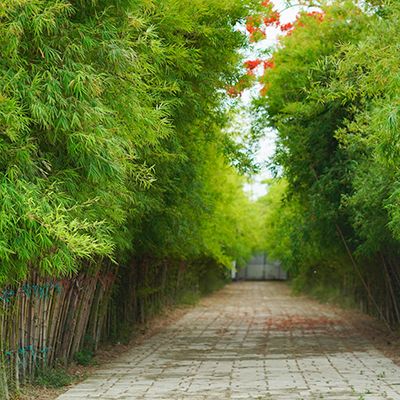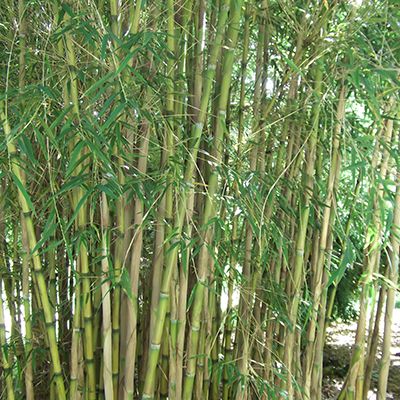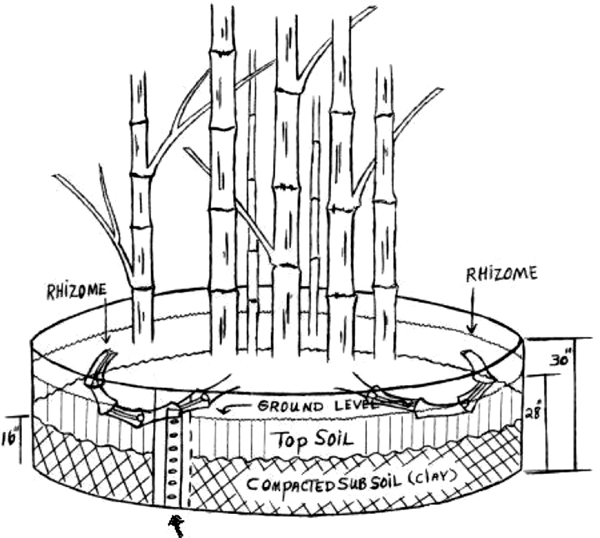

Bamboo Barriers
One of the ways to distinguish bamboo plants is to define them as clumping or running. These terms refer to the root systems of the plants. Technically, these underground parts are rhizomes which are underground stems and grow horizontally two to four inches below the earth’s surface. As the names indicate, clumping bamboos produce rhizomes which from a mass and tend to occupy a relatively small area. Running bamboos can produce rhizomes up to 40 feet long in one season! These running rhizomes will travel under sidewalks, driveways, patios, house foundations and have been seen to come up through cracks in the concrete floors of garages and sheds.
Think carefully before planting bamboo in your garden. If you plant a running bamboo and it escapes and enters a neighbor’s yard, you may peril a friendship. When you decide to plant running bamboo plants, some form of bamboo barrier is called for. High-density polyethylene (HDPE) bamboo barrier is the most effective and most easily handled of the barriers available.
TO INSTALL A BAMBOO BARRIER:
- Dig a trench 28 inches deep around the proposed site, removing the top soil first, then the heavier sub-soil. Stack these separately. If the site is very narrow, it may be easier to remove all of the soil from the installation rather than digging a trench. Avoid creating tight corners, as this may cause the barrier to fail due to undue stress to the material. For larger Phyllostachys, the total enclosure should have a circumference of at least 30 feet for the bamboo to reach its full potential.
- Place the barrier into the trench. Being 30 inches tall, the barrier will stand proud of the soil by two inches. This stops any rhizomes escaping over the top without being detected.
- Secure the overlapping ends with the stainless steel strips. Be sure that the overlap is only two to three inches, as a longer overlap may allow the rhizome to slip in between and negate the tightness of the joint. Merely overlapping the ends of plastic will not stop the escape of the rhizomes. The strips are 28 inches tall (the same as the depth of the trench) and must not protrude above soil level, thereby avoiding injury to feet.
- Back fill the trench first with the sub-soil, and compact this to drive out all air pockets. Then complete backfilling the trench with the top soil and pack that tight, too. At all times, make sure no sharp objects (stones, glass, metal, or tree roots) come into contact with the barrier. If the backfilled soil is not packed in tight, when the rhizomes contact with the barrier, they may be able to travel down through the loose soil and escape beneath the barrier, undetected.
